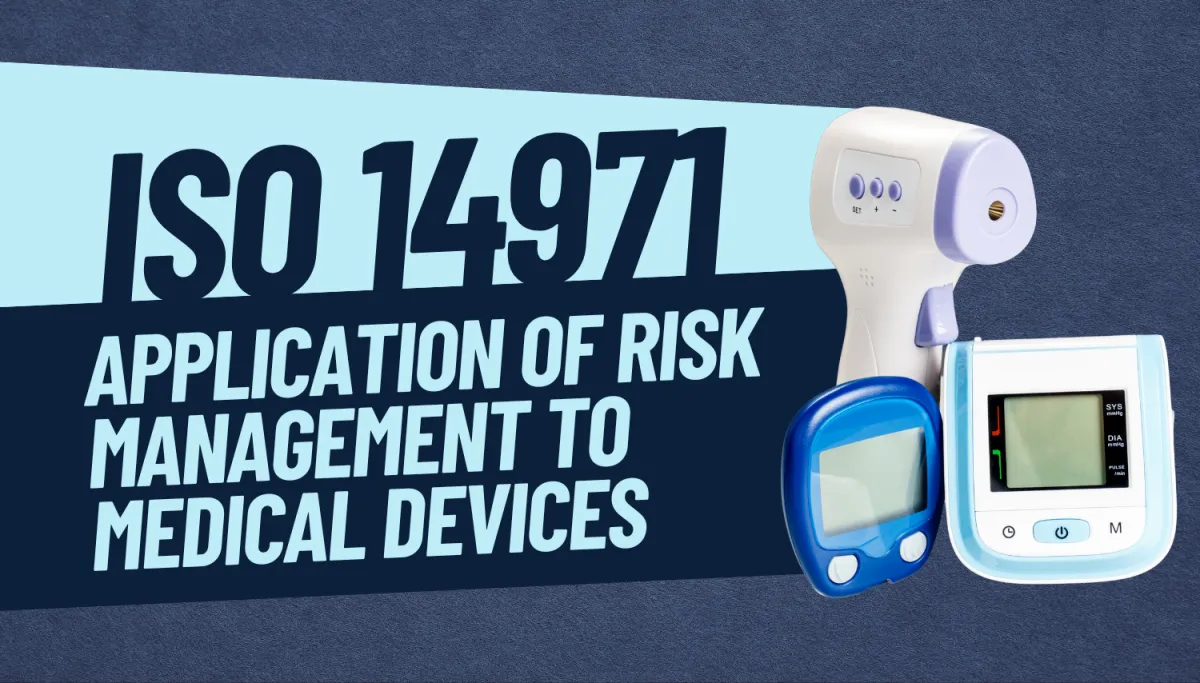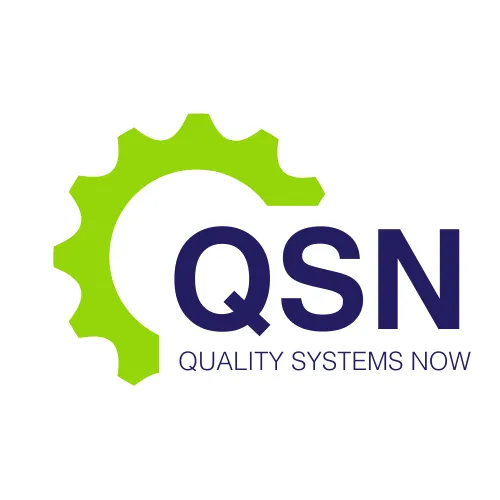LATEST NEWS

ISO 14971: Application of Risk Management to Medical Devices
Introduction to ISO 14971
ISO 14971 is the internationally recognised standard for the application of risk management to medical devices. It provides a systematic framework for identifying hazards, evaluating and controlling risks, and monitoring the effectiveness of those controls throughout the lifecycle of a medical device. Risk management is a critical component of medical device development, ensuring that products are both safe for patients and compliant with regulatory requirements. For companies involved in therapeutic goods manufacturing, biotechnology, and testing laboratories, implementing ISO 14971 is essential to maintain compliance, minimise liability, and protect patient safety.
If your team struggles with risk management or you’re a medical device startup gearing up for submission, this course is designed for you.
ISO 14971 was first published in 2000 and has undergone subsequent revisions to reflect evolving regulatory requirements and technological advancements in medical device manufacturing. The current edition emphasises the importance of integrating risk management throughout the product lifecycle, from initial concept through post-market surveillance. Compliance with ISO 14971 aligns with regulatory expectations from authorities such as the U.S. Food and Drug Administration (FDA), the European Medicines Agency (EMA), and other global health authorities.
Key Principles of ISO 14971
The core principles of ISO 14971 are founded on proactive risk identification and control. These principles include risk analysis, risk evaluation, risk control, and risk monitoring. Each stage of the process is designed to ensure that risks associated with medical devices are appropriately assessed and mitigated.
Risk Analysis: This involves the systematic identification of hazards associated with a medical device. Hazards may arise from design features, materials, manufacturing processes, or user interactions. The risk analysis process also considers foreseeable misuse and environmental conditions that may impact device performance. Tools such as failure mode and effects analysis (FMEA) and fault tree analysis (FTA) are commonly used to identify potential risks and their causes.
Risk Evaluation: Once hazards are identified, the next step is to assess the probability and severity of harm that could result from each risk. ISO 14971 recommends a structured approach for categorising risks and determining which risks are acceptable or require further mitigation. Acceptability criteria are typically based on regulatory guidance, industry best practices, and clinical considerations.
Risk Control: Risk control involves implementing measures to reduce risks to an acceptable level. Controls may include design modifications, protective measures, and information for users, such as warnings or instructions. ISO 14971 emphasises a hierarchy of risk control measures: first, eliminate hazards through design; second, implement protective measures; and third, provide user information to mitigate residual risk. Importantly, the standard requires that any residual risk be evaluated in relation to the overall benefit of the device.
Risk Monitoring and Review: Risk management does not end with the launch of a device. ISO 14971 mandates ongoing monitoring of device performance in the field, including the collection and analysis of post-market data. This enables manufacturers to identify emerging risks, verify the effectiveness of risk control measures, and implement corrective actions if necessary.
Integration of ISO 14971 into Medical Device Development
Effective risk management under ISO 14971 requires integration into all stages of medical device development. From concept design to production, clinical evaluation, and post-market surveillance, risk considerations must be documented and systematically addressed. Early integration helps reduce costly design changes and ensures compliance with regulatory expectations.
During the design and development phase, risk management should inform design decisions. For example, hazard identification during early design stages can guide material selection, device ergonomics, and software functionality. Design verification and validation activities should incorporate risk-based testing to confirm that control measures are effective.
Manufacturing processes also benefit from ISO 14971 implementation. Identifying potential risks in production, assembly, and packaging helps prevent device failures and ensures consistent product quality. Process controls, quality assurance measures, and staff training are all part of a comprehensive risk management plan.
Post-market surveillance is another critical element. Monitoring adverse events, device complaints, and clinical data allows manufacturers to detect patterns of risk and implement corrective actions. ISO 14971 requires that risk management activities be updated based on post-market findings, reinforcing a continuous improvement cycle.
Regulatory Significance
ISO 14971 is closely aligned with regulatory requirements in major markets. For example, the European Union Medical Device Regulation (EU MDR) explicitly references ISO 14971 as the standard for risk management. Compliance with the standard facilitates CE marking and market access in Europe. Similarly, the FDA recognises ISO 14971 as an accepted approach for demonstrating risk management in premarket submissions.
Beyond regulatory compliance, ISO 14971 provides a defensible framework for risk documentation. Detailed risk management files, including hazard analyses, risk evaluations, and control measures, serve as evidence of due diligence. These documents are crucial during audits, inspections, and potential legal inquiries, underscoring the importance of thorough and accurate record-keeping.
Practical Implementation Strategies
For organisations such as Quality Systems Now, practical implementation of ISO 14971 involves establishing formal policies, procedures, and documentation practices. Key strategies include:
Creating a Risk Management Plan: This plan defines the scope, responsibilities, and methodology for risk management activities. It serves as a roadmap for compliance with ISO 14971 throughout the device lifecycle.
Forming a Risk Management Team: Cross-functional teams, including design engineers, clinical specialists, and regulatory professionals, ensure a comprehensive approach to identifying and mitigating risks.
Utilising Risk Assessment Tools: Techniques such as FMEA, FTA, and hazard operability studies (HAZOP) provide structured methods for risk identification and evaluation.
Documenting Decisions: Maintaining detailed records of risk analyses, control measures, and residual risk assessments is essential for regulatory compliance and internal quality assurance.
Continuous Training: Staff involved in device design, manufacturing, and post-market activities must be trained in risk management principles to maintain competence and consistency.
Post-Market Review: Establishing mechanisms for collecting real-world data, reviewing adverse events, and updating risk assessments ensures that risk management is dynamic and responsive.
Benefits of ISO 14971 Compliance
Adhering to ISO 14971 offers multiple benefits. It enhances patient safety by systematically identifying and mitigating potential hazards. It supports regulatory submissions and audit readiness, reducing the risk of compliance issues. Additionally, robust risk management can improve product quality, reduce recalls, and enhance brand reputation.
From a business perspective, integrating ISO 14971 into operations fosters a culture of safety and accountability. It enables companies to make informed design decisions, prioritise resources effectively, and demonstrate due diligence to stakeholders. For companies in the therapeutic goods, biotechnology, and laboratory sectors, these benefits translate into competitive advantage and long-term operational sustainability.
Questions? Talk to us at Quality Systems Now
ISO 14971 represents the cornerstone of risk management in the medical device industry. Its systematic approach ensures that hazards are identified, risks are evaluated, and control measures are effectively implemented throughout the device lifecycle. By integrating ISO 14971 principles into design, manufacturing, and post-market activities, medical device manufacturers can enhance patient safety, comply with regulatory requirements, and strengthen organisational quality systems.
For companies like Quality Systems Now, specialising in GMP and regulatory compliance, ISO 14971 is an indispensable tool for guiding clients through the complexities of medical device risk management. Its rigorous framework not only supports compliance but also drives continuous improvement, enabling the safe delivery of innovative medical technologies to patients worldwide. Adherence to ISO 14971 is more than a regulatory obligation—it is a commitment to excellence, patient safety, and the responsible development of medical devices.
